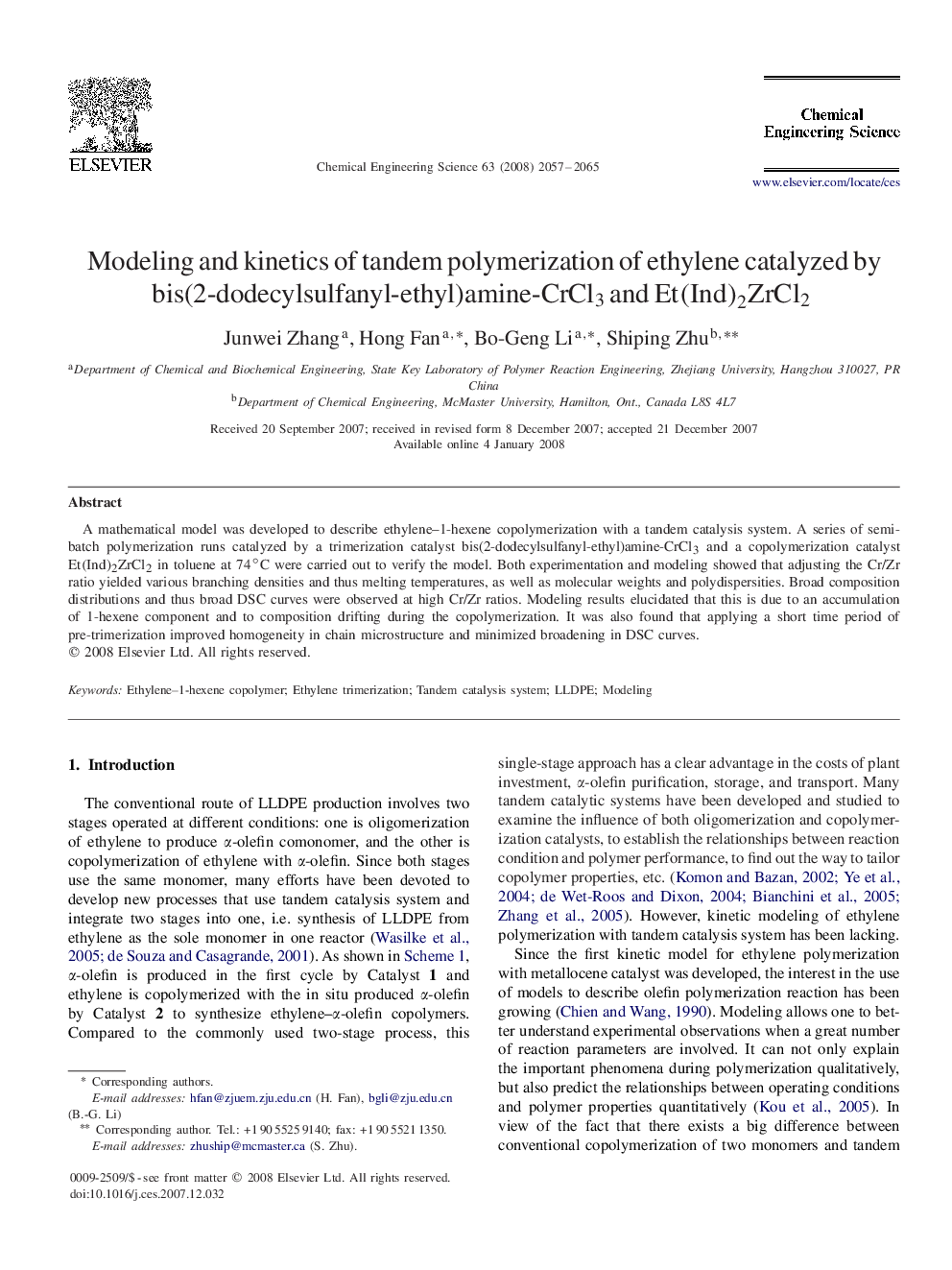| Article ID | Journal | Published Year | Pages | File Type |
|---|---|---|---|---|
| 157875 | Chemical Engineering Science | 2008 | 9 Pages |
A mathematical model was developed to describe ethylene–1-hexene copolymerization with a tandem catalysis system. A series of semi-batch polymerization runs catalyzed by a trimerization catalyst bis(2-dodecylsulfanyl-ethyl)amine-CrCl3CrCl3 and a copolymerization catalyst Et(Ind)2ZrCl2Et(Ind)2ZrCl2 in toluene at 74∘C were carried out to verify the model. Both experimentation and modeling showed that adjusting the Cr/Zr ratio yielded various branching densities and thus melting temperatures, as well as molecular weights and polydispersities. Broad composition distributions and thus broad DSC curves were observed at high Cr/Zr ratios. Modeling results elucidated that this is due to an accumulation of 1-hexene component and to composition drifting during the copolymerization. It was also found that applying a short time period of pre-trimerization improved homogeneity in chain microstructure and minimized broadening in DSC curves.
